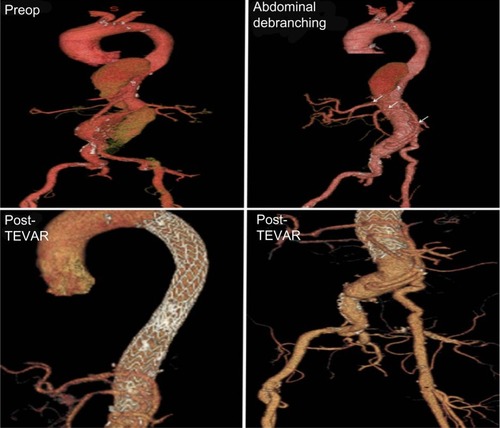Figures & data
Figure 1 Thoracoabdominal aneurysm classification.

Table 1 Criteria for thoracoabdominal aneurysm intervention
Figure 2 Zones of the aortic arch.
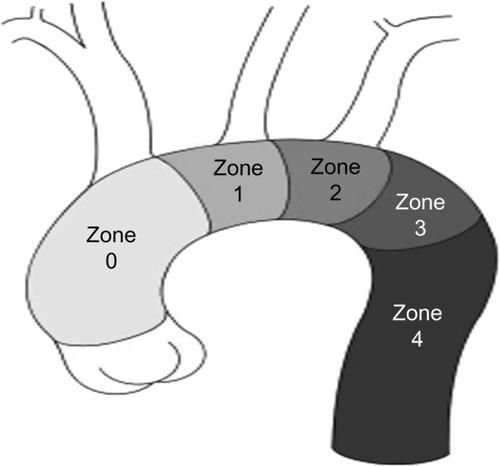
Figure 3 Salvage TEVAR.
Abbreviations: TEVAR, thoracic endovascular aneurysm repair; CTA, computed tomographic angiography.
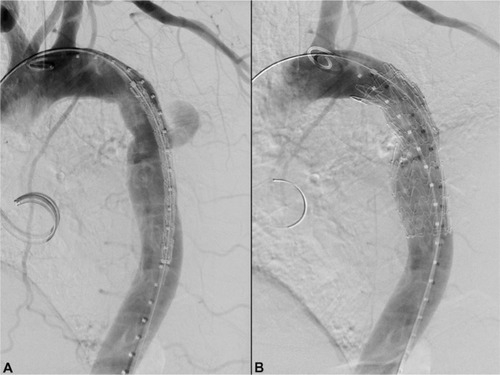
Figure 4 Branched endovascular devices.
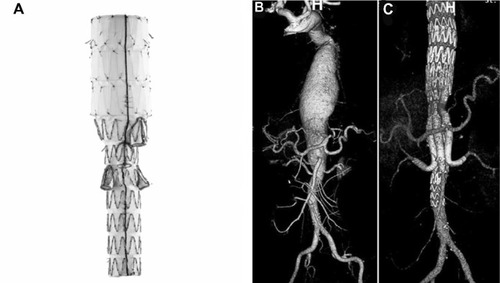
Figure 5 Parallel endografts.
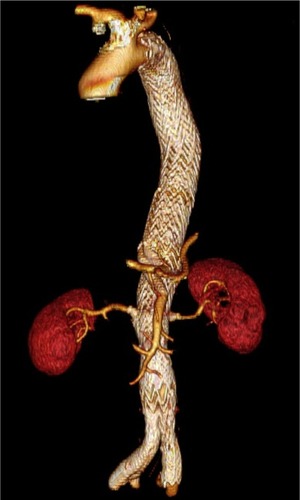
Figure 6 Molded TEVAR.
Abbreviation: TEVAR, thoracic endovascular aneurysm repair.
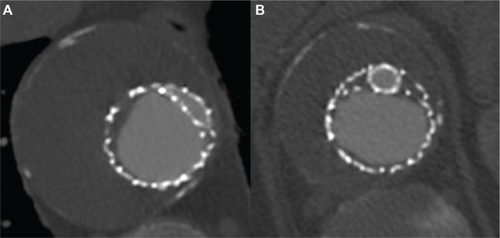
Figure 7 Arch debranching.
Abbreviation: TEVAR, thoracic endovascular aneurysm repair.

Figure 8 Multivisceral abdominal debranching.
Abbreviations: Preop, preoperatively; SMA, superior mesenteric artery; TEVAR, thoracic endovascular aneurysm repair.
